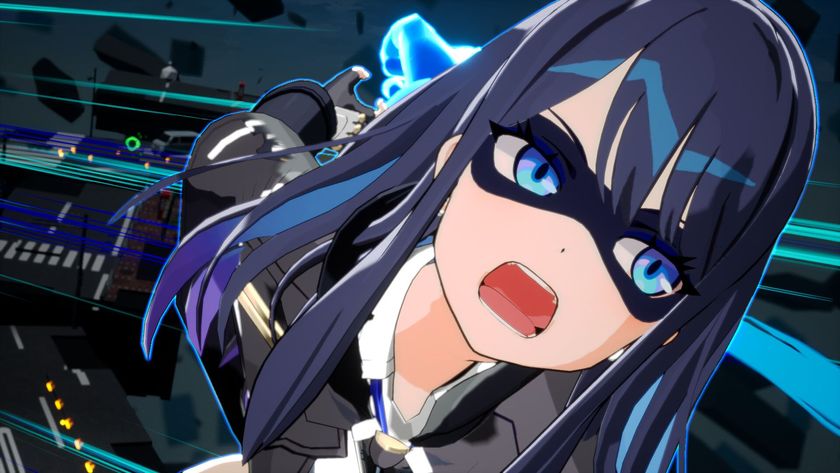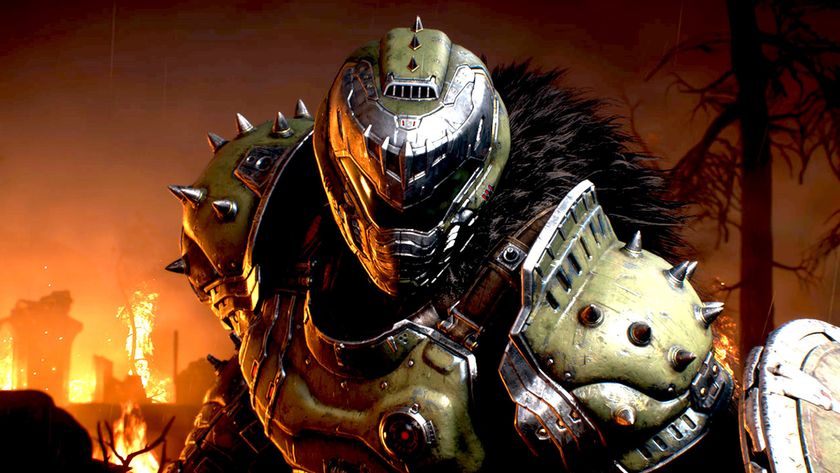So I was driving through the desert in Mad Max, my head shaven, skin bleached, spraying chrome paint into my mouth (immersion) when I saw something glimmering on the horizon. An abandoned car? A mysterious new weapon? True happiness? Oh. Wait. The map had already told me that it was some scrap I could pick up, so I didn’t wonder what it was. Thanks to that map, I never have to feel a sense of wonder again. Drive around enough and it’ll happily fill itself in, highlighting every secret, solving every mystery, playing the game for me.
Max is hardly the first offender, nor will he be the last. Assassin's Creed: Syndicate is so excited about all of the treasure chests it’s hidden around London, that it can’t help but blurt out the surprise, showing you where they are whenever you find an area’s viewpoint. Arkham Knight has 243 Riddler trophies to collect. You’ll need a keen eye and sharp detective skills to find all of those. Or you can just grab a glowing green goon, deliver a few Bat-slaps and he’ll tell you where they are, handily labelling your map. Mystery solved! Now you know which parts of Gotham need to be explored.

Which suddenly makes London/Gotham/Modern Australia feel a lot smaller. When I know where all the secrets are, I also know which areas aren’t worth my time. So I have no drive to explore those rooftops/that dark Gotham alley/Perth. These games have made it clear that there’s nothing there for me.
When I look back at the games I explored most, it was the ones that made me seek out secrets. Finding the machine gun in the original Dead Rising demo. Stumbling upon the hatch from Lost in GTA V. Discovering something that didn’t actually want to kill me in Dark Souls. Unearthing a hidden treasure in a game doesn’t just feel like Christmas morning, it entices me to explore more. If there was a secret in area A, could there be one in B, C or D? I’d happily lose hundreds of hours finding out.
So why aren’t more games willing to hide secrets from us? My guess is developers are scared that if we don’t see evidence that the sandbox is full of toys immediately, we’ll start screaming and accuse the game of not having the hundreds of hours of gameplay that were promised. It’s frustrating, because when it comes to collectibles, less is often more. I didn’t bother collecting all 243 of the Riddler trophies, not when they’ve hit ridiculous Pokémon numbers and some of them are about as challenging as putting on a mitten (Q: ‘Where’s the trophy?’ A: ‘Over there’).

Now imagine if the game had just 50 actual riddles. It didn’t tell you their location, or even how many there were to find. Each time you discovered and solved one it’d feel like an event. You’d wonder just how much of Gotham held such secrets. Even if you’d explored the GCPD rooftop a hundred times, it’d be hard to resist just one more search in case you’d missed a vital clue.
I know a lot of people don’t agree with me. The man who delivers my hate mail can attest to that. Some players’ eyes light up at the idea of leaping around virtual Italy collecting eight billion feathers. These people terrify me. But I propose a compromise, and by ‘propose a compromise’ I mean ‘have stolen an idea from The Witcher 3.’
Sign up to the 12DOVE Newsletter
Weekly digests, tales from the communities you love, and more
You start each area in The Witcher 3 with a clean map screen, nice and mysterious. But when you scan noticeboards or chat with gossiping townsfolk, the map steadily fills up with ugly question marks telling you where the gamey bits are. However, there’s an option in the menu that makes those question marks never appear. Perfect! Suddenly an already big game feels 50 times larger than space. We’re at the point where large, complex sandboxes full of activity are the standard for open world games. Now they need to risk making us work to find their best bits.
Click here for more excellent Official Xbox Magazine articles. Or maybe you want to take advantage of some great offers on magazine subscriptions? You can find them here.
Tom was once a staff writer and then Games Editor for Official Xbox Magazine, but now works as the Creative Communications Manager at Mojang. He is also the writer and co-creator of How We Make Minecraft on YouTube. He doesn't think he's been truly happy since he 100% completed Rayman Legends, but the therapy is helping.

















